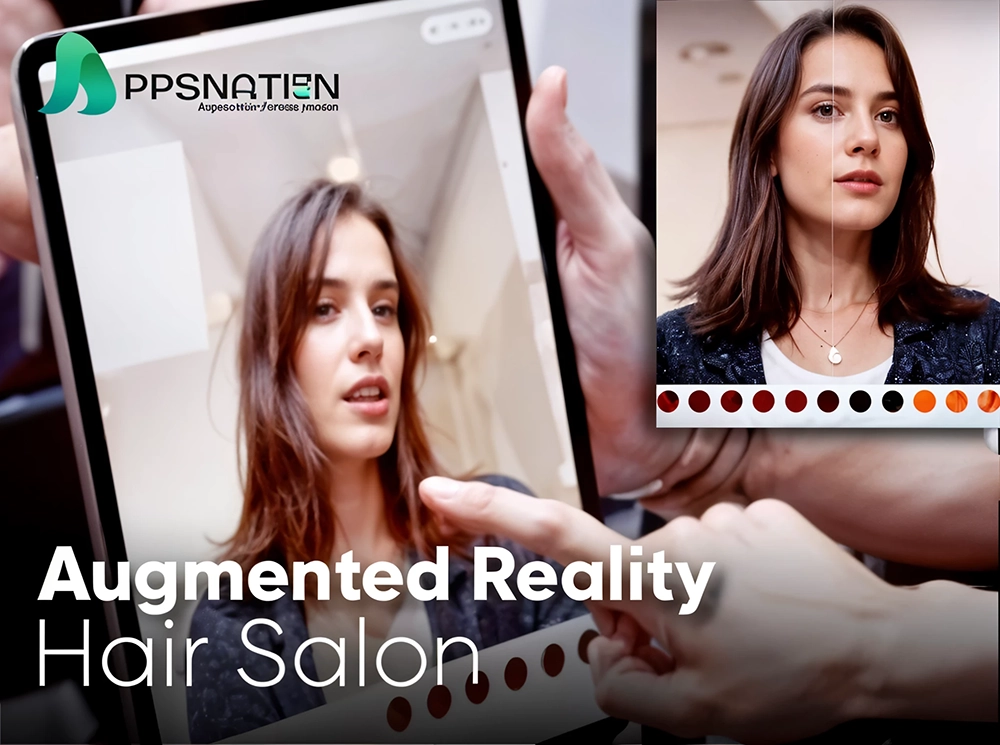Do you want to know about, How Virtual Reality technology can help you to get patients for your hospitals or even for your staff’s training?
Don’t worry this article will cover each and everything related to this problem.
Virtual reality (VR) is a technology that has gained significant interest in various fields, including healthcare. It offers a new and immersive way to experience a computer-generated environment that can mimic reality.
In recent years, there has been a growing interest in using VR in healthcare settings, particularly in hospitals for patient care.
In this article, we will explore the benefits of virtual reality in healthcare, its applications in hospitals, challenges, and limitations, as well as the future outlook of this promising technology.
Table of Content
| 1 | Benefits of Virtual Reality in Healthcare |
| 2 | Applications of Virtual Reality in Hospitals |
| 3 | Challenges and Limitations of Virtual Reality in Healthcare |
| 4 | Bonus Gift |
| 5 | Conclusion |
| 6 | FAQ |
Benefits of Virtual Reality in Healthcare
Virtual reality has the potential to revolutionize patient care in hospitals. One of the main advantages of using VR in hospital settings is the ability to provide immersive and interactive experiences for patients.
VR can transport patients to virtual worlds, allowing them to escape the often stressful and monotonous hospital environment. This can help reduce anxiety, pain, and stress, which are common experiences for patients in hospitals.
By providing a distraction from the hospital setting, VR can help improve the overall well-being and comfort of patients.
Moreover, VR can also be used in physical rehabilitation and therapy. For example, patients recovering from injuries or surgeries can use VR to engage in virtual exercises and activities that mimic real-world movements.
This can help improve their motor skills and accelerate their recovery process. VR can also be used in pain management, where patients undergoing medical procedures or treatments can use VR as a form of distraction, reducing the need for anesthesia or pain medications.
Why Virtual Reality is helpful for Hospitals
- Enhanced pain management: VR can distract patients from pain and discomfort during medical procedures, reducing the need for pain medications.
- Improved rehabilitation: VR can be used for physical and cognitive rehabilitation, helping patients regain lost abilities and improve their quality of life.
- Enhanced medical training: VR can provide realistic simulations for medical training, allowing healthcare professionals to practice procedures and scenarios in a safe and controlled environment.
- Increased patient engagement: VR can engage patients in their own healthcare by providing interactive and immersive experiences that educate and empower them.
Applications of Virtual Reality in Hospitals
Currently, there are several examples of how VR is being used in healthcare settings, particularly in hospitals.
One common application is in pain management during medical procedures or treatments. For example, patients undergoing chemotherapy or other invasive procedures can use VR to distract themselves from the pain and discomfort associated with these treatments.
VR can create a virtual environment that patients can focus on, helping to reduce their perception of pain and anxiety.
Another application of VR in hospitals is for distraction and relaxation in patients with chronic conditions.
For instance, children with chronic illnesses or long hospital stays can use VR to play games, watch movies, or engage in other interactive experiences that can help pass the time and alleviate stress.
VR can also be used to create calming and relaxing virtual environments
Challenges and Limitations of Virtual Reality in Healthcare
Virtual Reality (VR) has shown immense potential in healthcare settings, but there are also challenges and limitations that need to be addressed for its effective implementation in hospitals. Some of the key challenges and limitations of VR in healthcare include:
Cost and Technical Issues
One of the primary challenges of implementing VR in hospitals is the cost associated with the technology.
VR equipment, software, and maintenance can be expensive, making it difficult for many hospitals, especially smaller ones, to afford and integrate VR into their healthcare practices.
Additionally, VR technology requires high-performance computing and graphics processing capabilities, which may not be readily available in all hospital settings.
Technical issues such as hardware compatibility, software glitches, and connectivity can also pose challenges in the smooth implementation and usage of VR in healthcare settings.
Potential for Motion Sickness or Discomfort in Patients
Another limitation of VR in healthcare is the potential for motion sickness or discomfort in some patients.
The immersive nature of VR experiences can trigger motion sickness, dizziness, or discomfort in certain individuals, which may limit their ability to fully benefit from VR-based interventions.
This is especially relevant in patients who may already have pre-existing conditions such as vertigo or other vestibular disorders. Managing motion sickness and discomfort in patients is an important consideration when implementing VR in healthcare settings.
Need for Further Research and Evidence-Based Studies
While the potential benefits of VR in healthcare are promising, there is a need for further research and evidence-based studies to validate its effectiveness.
Although there have been several small-scale studies showing positive outcomes of VR interventions in healthcare, larger-scale, randomized controlled trials are needed to establish the true efficacy of VR in improving patient outcomes.
More research is also needed to understand the long-term effects of VR interventions and to identify the most effective ways to integrate VR into existing healthcare workflows.
Bonus Gift
If you want to know about how virtual reality can help your hospital to grow your hospital and also help in your staff’s training then we can schedule a free 20 minutes consultation session by filling our form.
Conclusion
In conclusion, while there are challenges and limitations in implementing VR in healthcare, the potential benefits and applications of VR in hospital settings are significant.
With continued advancements in VR technology, increased affordability, and further research validating its effectiveness, VR has promising potential to improve patient care and experiences in healthcare settings.
Frequently Asked Questions (FAQs)
Is VR technology currently being used in hospitals?
Yes, VR technology is being used in some hospitals for various purposes such as pain management, rehabilitation, and training healthcare professionals.
What are the challenges of implementing VR in healthcare settings?
Challenges of implementing VR in healthcare settings include cost and technical issues, potential for motion sickness or discomfort in patients, and the need for further research and evidence-based studies.
Can motion sickness be a limitation of VR in healthcare?
Yes, motion sickness can be a limitation of VR in healthcare, especially in patients who may have pre-existing conditions such as vertigo or other vestibular disorders.
What is the future outlook of VR in healthcare?
The future outlook of VR in healthcare is promising, with advancements in technology and increased affordability expected to overcome current challenges.
How can VR potentially improve patient care in hospitals?
VR can potentially improve patient care.





